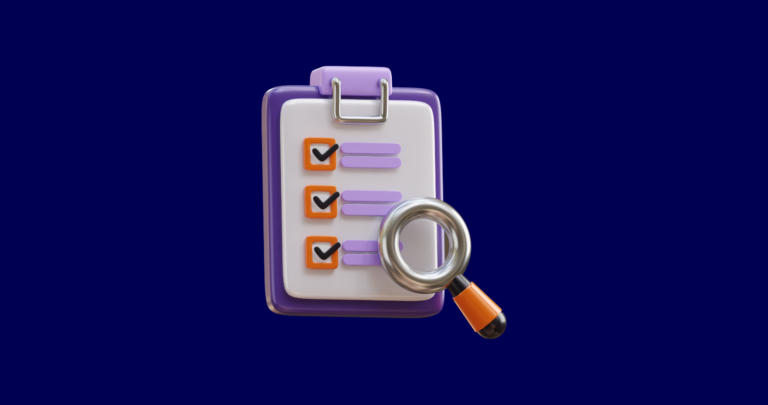SaaS SEO Metrics You Must Track in 2025
The SaaS world moves fast, and to keep up, you need to constantly check how your SEO is doing. Data is king in SaaS, but with so many SEO metrics to track, it can be overwhelming to figure out which ones truly matter for your growth.
As a SaaS SEO company, you’re probably drowning in data but still struggling to see how your SEO efforts are actually impacting your business. That’s where understanding the most important SaaS SEO metrics becomes crucial. Without a clear focus on these key indicators, you risk losing sight of your goals, making it harder to grow and stay ahead in this competitive landscape.
In this article, we’ll simplify the complex world of SaaS SEO metrics. We’ll highlight the essential metrics that will help you refine your strategies, improve your search rankings, and ultimately achieve sustainable growth in 2024. Let’s use the power of data to drive your SaaS business forward.
Understanding SEO for SaaS
SaaS SEO is all about making your software as a service company more visible in search engines. The main goal is to get more people to find your website organically through search engines like Google. These visitors can then become leads and, eventually, paying customers.
There is a big difference between SaaS SEO vs. traditional SEO. While traditional SEO works for many types of businesses, SaaS SEO is unique in a few ways:
- Niche Audience: SaaS companies usually serve a specific, smaller audience with very particular problems.
- Longer Sales: Unlike online shopping, where decisions are often quick, SaaS sales take longer and involve more steps.
- Subscriptions: SaaS businesses rely on customers sticking around and paying regularly. So, SEO isn’t just about attracting new users, but also keeping existing customers interested.
- Valuable Content: SaaS SEO often requires more detailed and technical content. Think blog posts, white papers, case studies, and how-to guides.
Keyword Research: The Foundation of SaaS SEO
Keyword research is super important for any SEO strategy, but it’s especially crucial for SaaS companies. Here’s why:
- User Intent: In the SaaS world, it’s vital to understand what potential customers are searching for. Are they looking for a solution to a problem? Comparing different software? Keyword research helps you understand these intentions so you can create content that meets their needs.
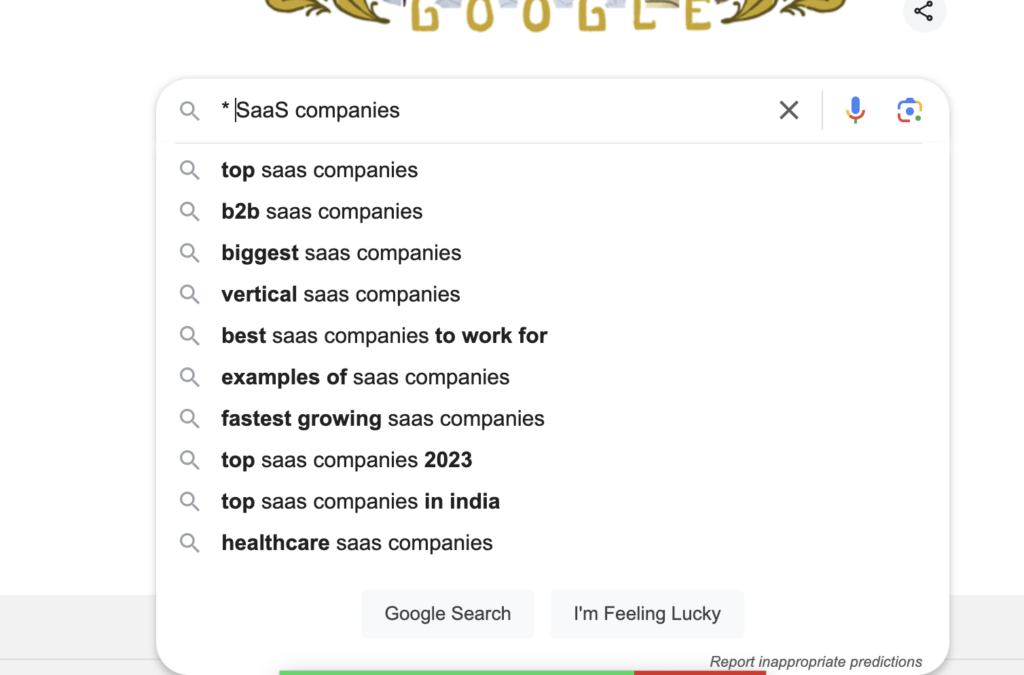
- High-Intent Keywords: SaaS companies benefit from focusing on keywords that show a user is close to buying.
- Competition: The SaaS industry is competitive, but the right keywords can help you stand out.
- Long-Tail Keywords: Since many SaaS products are specialized, long-tail keywords (more specific phrases) are very important. These keywords may have lower search volumes but attract users with very specific needs, leading to higher conversion rates.
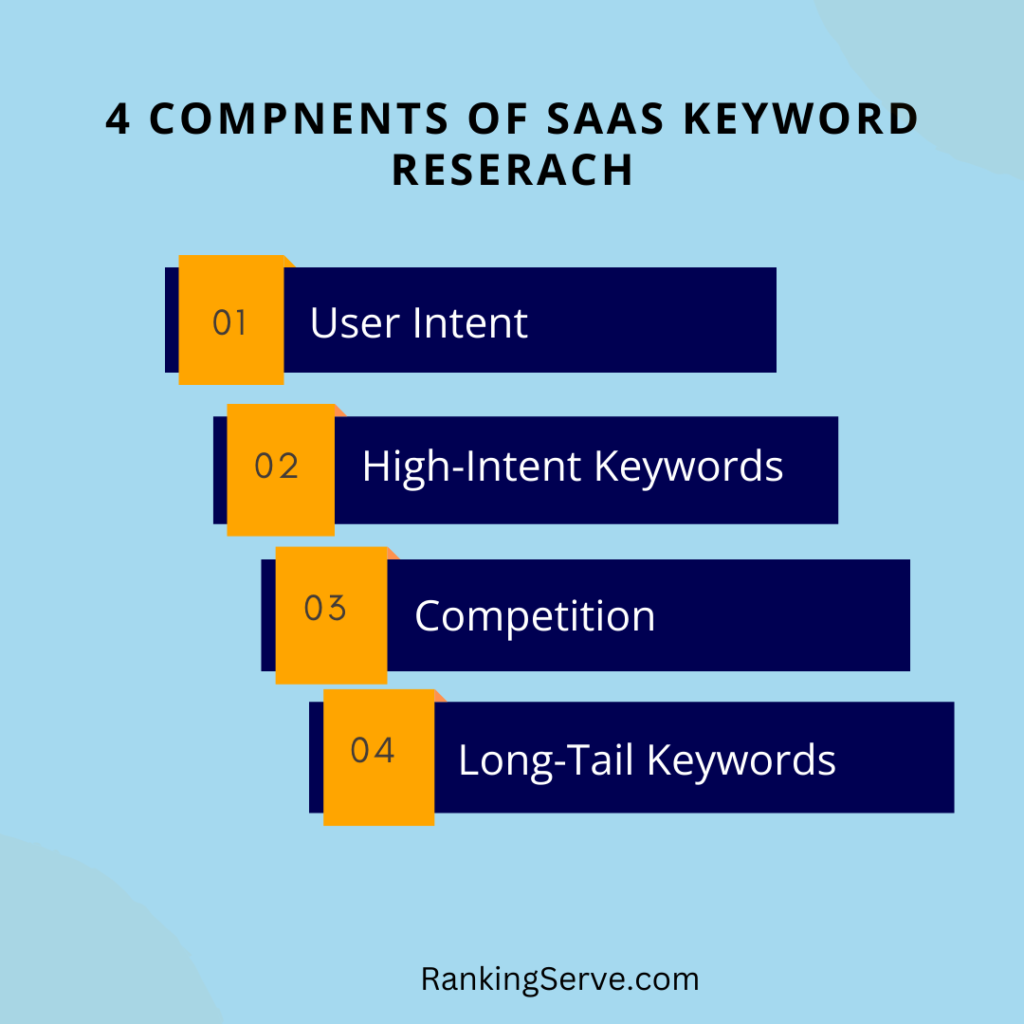
Key SaaS SEO Strategies
So, how do you optimize SEO for SaaS companies? To truly excel at SaaS SEO, you need a well-rounded strategy that includes keyword research, on-page optimization, technical SEO, and content marketing. Each of these pieces is important for boosting your visibility, attracting the right audience, and turning potential customers into loyal ones.
SaaS Keyword Research: Find the Keywords That Matter
Keyword research is the basis of any good SEO strategy, especially for SaaS companies. Here’s how to approach it:
- Understand Your Audience’s Pain Points: Start by figuring out the challenges and needs of your target customers. What problems are they trying to solve with your software? Use this information to come up with a list of potential keywords.
A report highlights that 84% of customers say the experience a company provides is as important as its products and services. - Focus on High-Intent Keywords: These keywords show that a user is ready to make a purchase decision. For example, phrases like “best CRM software for small businesses” or “top project management tools” suggest that the searcher is actively looking for solutions. These keywords are more likely to convert, making them valuable targets.
- Use Keyword Research Tools: Tools like Google Keyword Planner, SEMrush, Ahrefs, and Moz can help you find high-intent keywords, see how often people search for them, and assess the competition. These tools also provide insights into long-tail keywords (more specific phrases), which are particularly important for SaaS companies due to their niche focus.
- Check Out Your Competitors: See what keywords your competitors are ranking for. This can give you ideas and show you areas where you can improve your own keyword strategy. Tools like Ahrefs and SEMrush make it easy to analyze your competitors‘ keywords.
- Consider User Intent: Don’t just find keywords; understand the intent behind them. Are users looking for information, ready to buy, or comparing options? Tailor your content to match their intent, ensuring it meets their needs.
On-Page SEO: Optimizing Your Content
Once you know the right keywords, it’s time to optimize your website content so you can rank for those terms. Here are some of the best SEO practices for SaaS businesses:
- Title Tags: Make sure your title tags are interesting and include your primary keyword. They should be clear and concise, encouraging people to click on them in the search results.
- Meta Descriptions: Write meta descriptions that accurately describe your content and include the target keyword. While they don’t directly impact rankings, they do influence click-through rates, which can help your SEO.
- Headers: Use headers (H1, H2, H3) to organize your content logically. Include relevant keywords in your H1 tag and use H2 and H3 tags to break up the content and make it easier to read.
- Internal Linking: Use internal links to guide users through your website and help search engines understand its structure. Link to related articles, product pages, or case studies to keep users engaged.
- Relevance and Value: Your content should directly address the needs of your target audience. High-quality, relevant content is more likely to engage users and earn backlinks, both of which are crucial for SEO.
According to a study, long-form content of over 2,000 words tends to get more shares and backlinks, boosting SEO. - Readability: Write in a clear, easy-to-understand way. Use short paragraphs, bullet points, and visuals to make the content more digestible.
- Keyword Placement: Include your keywords naturally throughout the content, but don’t overdo it. Focus on readability and providing value.
Technical SEO for SaaS
Technical SEO is crucial for making sure search engines can easily find, understand, and rank your website. Here are some key things to focus on:
- Site Speed: A fast-loading website provides a better user experience and is favored by search engines. Tools like Google PageSpeed Insights can help you identify and fix issues that might be slowing down your site.
Google reports that as page load time goes from 1s to 3s, the probability of bounce increases by 32%. - Mobile Optimization: Most web traffic comes from mobile devices, so your site must be mobile-friendly. Use responsive design, optimize images, and test your site on different devices to ensure it works well everywhere.
Statista reports that in 2023, mobile devices generated 58% of global website traffic. - Schema Markup: Implementing schema markup helps search engines better understand your content. For SaaS companies, adding schema for product reviews, FAQs, and software applications can enhance your search listings with rich snippets, leading to more clicks.
- Security: Make sure your site is secure by using HTTPS. This not only protects your users but also improves your SEO, as search engines prefer secure sites.
A survey found that 84% of users would abandon a purchase if they knew the data was going to be sent over an insecure connection. - XML Sitemaps and Robots.txt: Keep your site’s XML sitemap up to date and submit it to search engines. Use the robots.txt file to control how search engines crawl your site, blocking any pages you don’t want to be indexed.
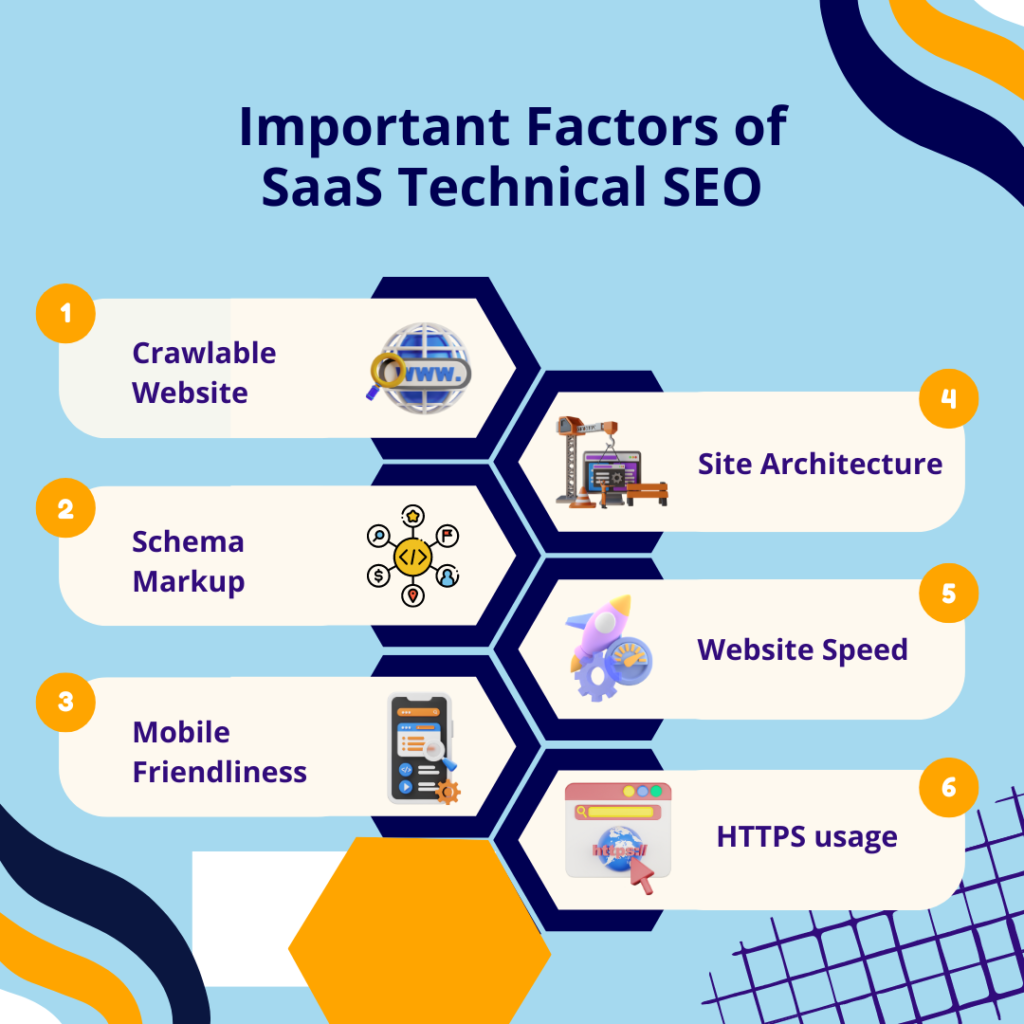
SaaS Content Marketing
Content marketing is a powerful tool for SaaS companies. It helps build authority, engage potential customers, and support your SEO efforts. Research found that 93% of the most successful B2B marketers are extremely committed to content marketing.
Here are some SEO content strategies for SaaS platforms that get results:
- Blog Posts: Publish blog posts regularly on relevant topics to help you rank for various keywords and provide value to your audience. Focus on topics that address your target customers’ pain points and offer actionable insights.
- Case Studies: Showcasing success stories from your existing customers through case studies builds credibility and demonstrates the value of your product. Case studies are also great for targeting decision-makers who are considering your product.
- White Papers and Ebooks: These in-depth resources position your company as a thought leader. They’re particularly useful for generating leads, as users often provide their contact information to download them.
- Customer Success Stories: Sharing stories of how your customers have benefited from your software provides social proof and helps potential customers see how your product can solve their problems.
According to Nielsen, 92% of consumers trust earned media, such as word-of-mouth and recommendations from friends and family, over all other forms of advertising. - Video Content: Video is a popular format that can explain complex concepts, provide product demos, or share customer testimonials. It’s also highly shareable, which can boost your SEO through backlinks and social signals.
Wyzowl reports that 87% of marketers say video has increased traffic to their website.
Measuring SEO success for SaaS
Doing SEO is just the first step. To make sure it’s actually working, you need to measure your success. For SaaS companies, tracking specific metrics and SaaS SEO KPIs (Key Performance Indicators) tells you how well your SEO is doing and where you might need to make changes.
Key Metrics for Tracking SEO
- Organic Traffic: This is the number of people visiting your website through unpaid search results. More organic traffic usually means more brand visibility, leads, and sales for SaaS companies.
A report indicates that organic search drives 53% of all website traffic, highlighting the importance of SEO in driving visibility and engagement. - Keyword Rankings: This tracks where your target keywords show up in search results. Monitoring keyword rankings helps you see which SEO efforts are working and which keywords need more attention. It’s especially important to track high-intent keywords that are likely to lead to sales.
A study found that the top listing in Google’s organic search results receives 33% of the traffic. - Conversion Rate from Organic Traffic: This shows the percentage of visitors who take a desired action (like signing up for a trial or requesting a demo) after finding your site through organic search. High organic traffic is great, but it’s even better when it leads to conversions. This metric helps SaaS companies see how good the traffic they’re getting from SEO really is.
You can measure it using the following formula.
Conversion Rate (%)=( Number of Conversions / Total Organic Visitors )×100
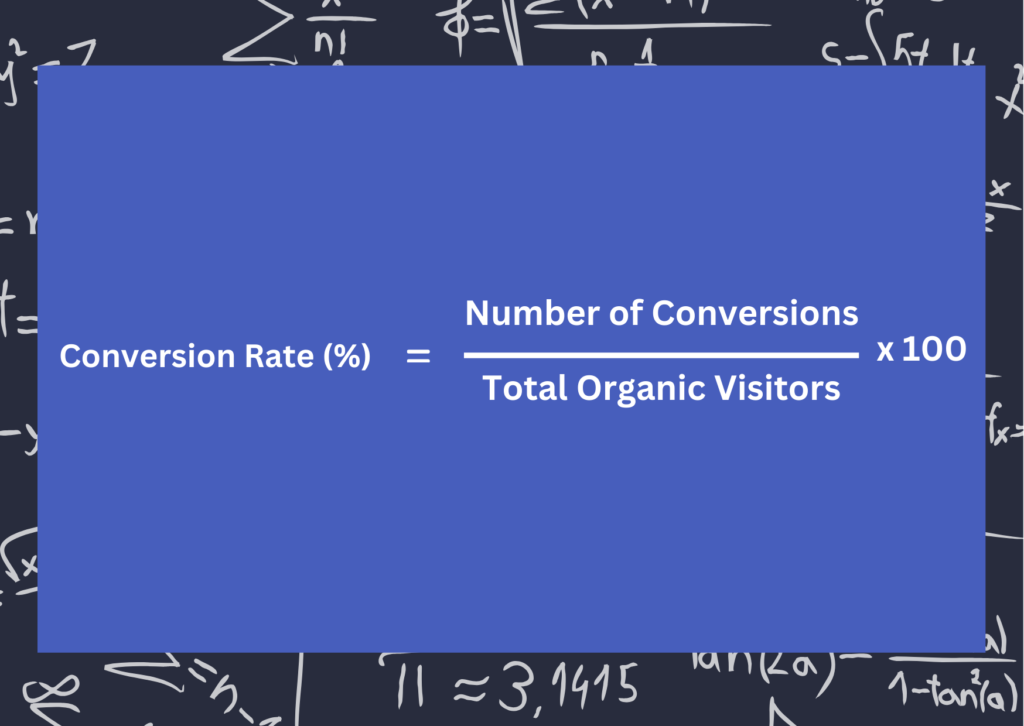
- Bounce Rate: This is the percentage of visitors who leave your site after only viewing one page. A high bounce rate might mean your content isn’t interesting or visitors aren’t finding what they expected. For SaaS businesses, reducing the bounce rate is key to keeping potential customers engaged and moving them toward a purchase.
- Time on Page and Session Duration: These show how long visitors stay on individual pages and your website overall. Longer times usually mean visitors find your content valuable and engaging. This is especially important for SaaS companies, where educating potential customers is a big part of the sales process.
- Backlinks: These are links from other websites pointing to your content. High-quality backlinks show that your content is authoritative and relevant. For SaaS companies, building lots of good backlinks can significantly improve search rankings and bring in more organic traffic.
- Customer Lifetime Value (CLV): This represents the total revenue you can expect from a single customer over their entire relationship with your company. For SaaS businesses, understanding the CLV of customers acquired through organic search helps you see the long-term value of your SEO work.
You can measure it using the formula.
CLV=Average Revenue Per User (ARPU)×Average Customer Lifespan
- Cost Per Acquisition (CPA): This is the cost of getting a new customer through SEO. Keeping CPA low while maintaining or increasing CLV is essential for profitability. This metric helps SaaS companies see how efficient their SEO is at generating cost-effective leads.
You can measure it using the formula.
CPA= Total Cost of SEO Campaign / Number of New Customers Acquired
Tools for Tracking and Analyzing SaaS SEO
To track these metrics effectively, SaaS companies can use various tools that provide detailed insights into their SEO performance:
- Google Analytics: Tracks organic traffic, bounce rates, time on page, and conversion rates. It also provides data on user behavior and demographics.
- Google Search Console: Monitors keyword rankings, organic search performance, and site health. It also alerts you to any technical issues affecting your site’s visibility in search engines.
- SEMrush/Ahrefs: Both offer in-depth keyword tracking, backlink analysis, and competitive insights. They also have tools for conducting site audits and monitoring keyword rankings over time.
- Moz: Provides keyword research, link building, and site auditing tools. Moz’s Domain Authority score is helpful for assessing the overall strength of your site’s SEO.
- HubSpot: Combines SEO tools with broader marketing automation, allowing seamless tracking of SEO metrics alongside other marketing efforts.
- SEO Dashboards for SaaS: Customizable dashboards can aggregate data from various tools, giving you a complete view of your SEO performance in one place, making it easier to monitor all your key metrics at a glance and make informed decisions quickly.
Advanced SaaS SEO Techniques
As SaaS companies face more competition, you need to use advanced SEO techniques to stay ahead. Besides the basics, strategies like link building, user-generated content, and multimedia can really boost your SEO and help you reach a wider audience.
Link-Building Strategies for SaaS
Backlinks (links from other websites to yours) are still one of the most powerful SEO tactics, but SaaS companies need a more targeted approach. Here’s how to build a strong backlink profile:
- Guest Posting: Write guest posts for reputable blogs in your industry. Focus on websites that your target audience reads and have a good reputation. This earns you high-quality backlinks and positions you as an expert.
- Create Shareable Content: Develop content that people will want to share, like comprehensive guides, original research, or infographics.
- Connect with Influencers: Engaging with industry influencers and thought leaders can lead to backlinks. Share their content, comment on their posts, and build a relationship before pitching your own content.
- Participate in Industry Forums: Being active in industry-specific forums, communities, and Q&A sites can help you build links back to your site. Provide helpful answers and links to your relevant content when appropriate.
User-Generated Content and Reviews
User-generated content (UGC) and reviews are powerful tools. They can enhance your SEO by providing fresh, authentic content and increasing user engagement. Here’s how to leverage them effectively:
- Encourage Reviews: Actively ask your customers to leave reviews on platforms like Google My Business or industry-specific review sites. Positive reviews build trust and help with local SEO. They also provide social proof, which can influence potential customers.
A survey found that 91% of consumers read online reviews before making a purchase, - Showcase Testimonials: Feature user testimonials on your website, especially on landing pages, case studies, and product pages. Testimonials can help reduce bounce rates and increase conversions by showing potential customers how your software has helped others.
- Run UGC Campaigns: Launch campaigns that encourage users to share their experiences with your product on social media or your website. This could include contests, photo sharing, or feature requests. UGC campaigns create fresh content and boost social media engagement. When users share their experiences, they often create backlinks to your site, which is great for SEO.
The Power of Video and Multimedia
Multimedia, especially video content, is becoming really important for SEO. Search engines like rich, engaging content. Here’s how to use video and other multimedia:
- Explainer Videos: Make short, informative videos that explain how your software works or showcase its key features. Host these videos on your website and platforms like YouTube.
- Video Testimonials: Collect and share video testimonials from happy customers. These can be placed on landing pages, product pages, and case study sections.
- Webinars and Tutorials: Host webinars or create tutorial videos that offer deep insights into industry topics or show off advanced features of your software. These can be used as gated content to generate leads. Webinars and tutorials establish you as an authority.
GoToWebinar found that 73% of B2B marketers and sales leaders say a webinar is the best way to generate high-quality leads. - Optimize Multimedia: Make sure all your multimedia content is optimized for search engines. Include keywords in video titles, descriptions, and alt text for images. Use structured data to help search engines understand the content.
Conclusion
In the cutthroat world of SaaS, a strong SEO strategy isn’t just nice to have – it’s vital for continued growth and success. By understanding the specific challenges of SaaS SEO, you can greatly improve your online visibility and results. But remember, SEO isn’t a one-and-done deal. It needs constant attention.
As search engines change and competition increases, you have to keep an eye on your SEO performance, adapt to new trends, and tweak your strategies. Tools and regular audits will help you stay on track and get the best possible results.
Investing in a solid SEO strategy is an investment in the long-term success of your SaaS business. By following the strategies we’ve talked about and consistently monitoring your performance, you can set your company up for lasting growth and become a major player in your industry.
Ready to supercharge your SaaS growth with SEO? We can help you unlock your business’s full potential with a powerful SEO strategy. Download our free checklist to get started and make sure you’re optimizing your site for maximum visibility and leads. If you’re looking for more personalized guidance, our team of SEO experts is ready to help with in-depth audits and consultations.


